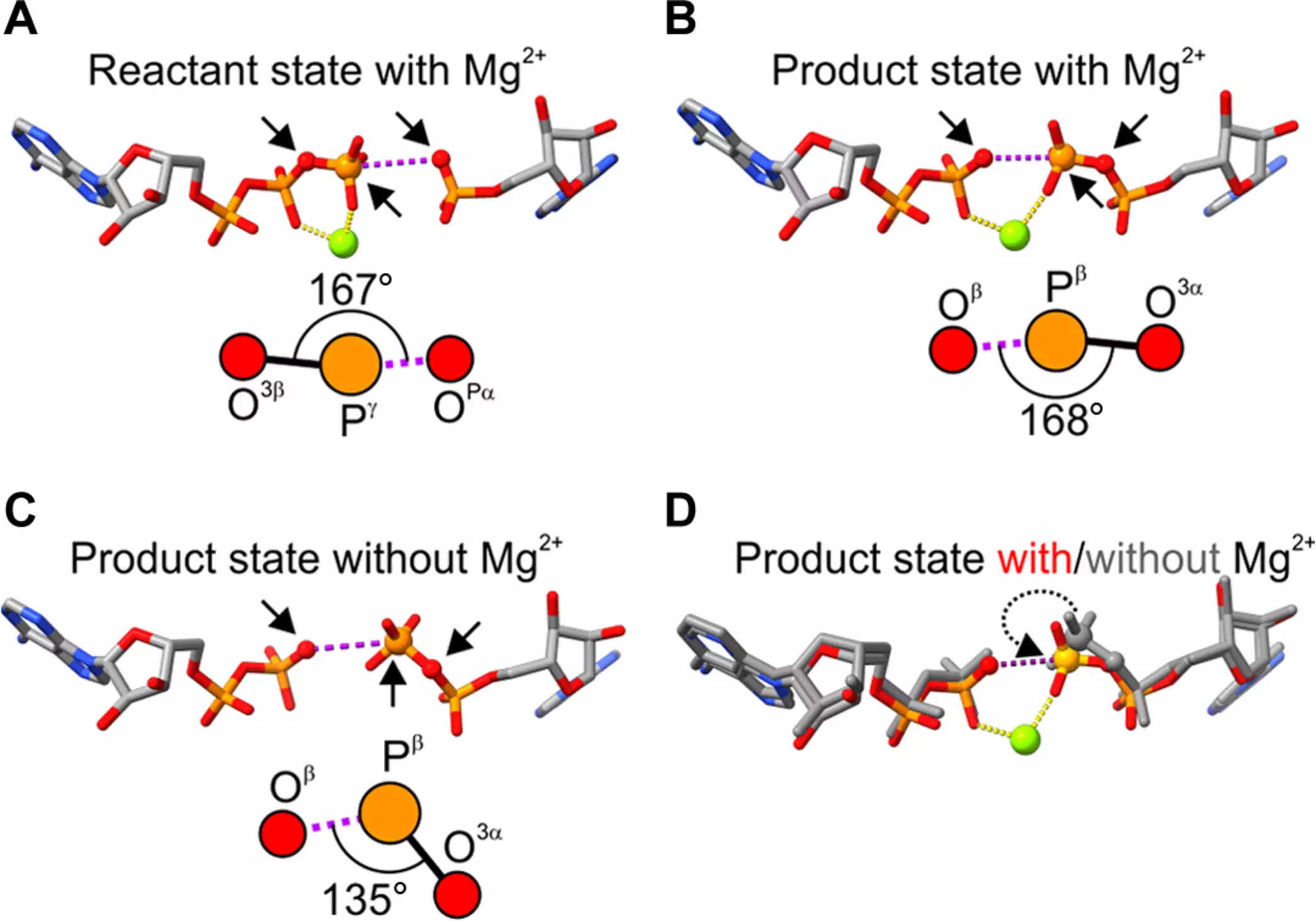Adenosine triphosphate, commonly referred to as ATP, is often heralded as the energy currency of life. Found in every cell across diverse organisms, ATP is essential for various biological processes, from muscle contraction to cellular signaling. Despite its crucial role, the intricate details behind its synthesis have been a subject of ongoing research. Recent advancements led by an international team from Umeå University have illuminated a key player in the enzymatic pathway responsible for ATP production—magnesium. This discovery not only enhances our understanding of ATP synthesis but also opens new avenues for research into relevant health and disease processes.
The enzyme adenylate kinase plays a fundamental role in producing ATP from its precursors, adenosine diphosphate (ADP) and adenosine monophosphate (AMP). A significant detail that emerges from this research is magnesium’s indispensable role in this biochemical reaction. While it has been established that magnesium catalyzes reactions through electrostatics, this earlier framework lacked clarity on the precise mechanisms that facilitate increased reaction speeds. It is great to see that the researchers have not merely confirmed existing knowledge; they have profoundly expanded upon it by revealing the angle at which magnesium interacts with ATP’s precursors.
Professor Magnus Wolf-Watz articulated the importance of this finding, emphasizing how, through its structural positioning, magnesium manipulates the geometry of ADP and AMP, ensuring they align correctly within the enzyme’s active site. This alignment is crucial to achieving optimal catalytic efficiency.
The robustness of the team’s findings stems from a unique combination of experimental and computational methods. Utilizing crystallographic methods, researchers documented the specific angular adjustments made by magnesium atoms during the reaction. This work was spearheaded by Professor Elisabeth Sauer-Eriksson, whose expertise in crystallography laid the groundwork for capturing these subtle, yet significant, structural changes.
Complementing the experimental work, the computational chemistry analysis conducted under Dr. Kwangho Nam’s guidance at the University of Texas at Arlington provided critical insight into how angular adjustments influence the entire enzyme’s structure. This multidimensional approach has enabled researchers to establish a direct correlation between magnesium’s positioning and the catalytic capabilities of adenylate kinase—an insight that had previously eluded scientists for years.
Implications for Biological Processes and Diseases
The implications of this research stretch far beyond just understanding ATP synthesis. Since ATP facilitates numerous biological functions, insights into its production may aid in comprehending energy-related diseases, metabolic disorders, and even bacterial infections. Professor Wolf-Watz pointed out that grasping the mechanics of ATP production equips scientists with tools to unravel complex biological processes, potentially leading to innovative approaches in therapeutic interventions.
Moreover, the findings present an essential perspective on magnesium’s broader biological significance. Given the metal’s involvement in various enzymatic reactions, understanding its specific contributions to ATP synthesis can serve as a foundation for exploring its roles in other essential biochemical pathways.
The discovery led by Professor Magnus Wolf-Watz and his international team is a significant stride in biochemistry, revealing the nuanced role magnesium plays in ATP formation. By elegantly illustrating how minor geometric changes can lead to extensive catalytic effects, this research not only deepens our comprehension of bioenergetics but also sets the stage for future explorations into the broad spectrum of biological processes it governs. As we equip ourselves with this newfound knowledge, the landscape of biochemical research becomes ripe for exploration, innovation, and further discoveries that could reshape our understanding of life at the molecular level.


Leave a Reply